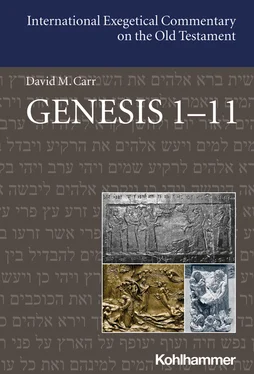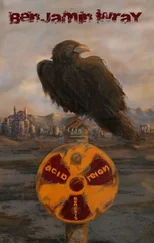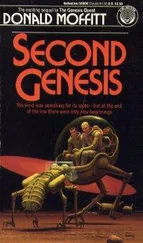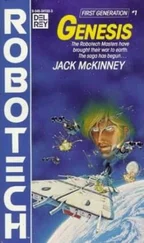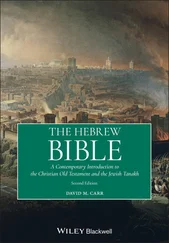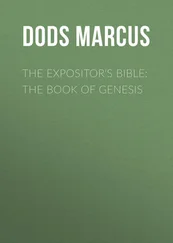David M. Carr - Genesis 1-11
Здесь есть возможность читать онлайн «David M. Carr - Genesis 1-11» — ознакомительный отрывок электронной книги совершенно бесплатно, а после прочтения отрывка купить полную версию. В некоторых случаях можно слушать аудио, скачать через торрент в формате fb2 и присутствует краткое содержание. Жанр: unrecognised, на английском языке. Описание произведения, (предисловие) а так же отзывы посетителей доступны на портале библиотеки ЛибКат.
- Название:Genesis 1-11
- Автор:
- Жанр:
- Год:неизвестен
- ISBN:нет данных
- Рейтинг книги:4 / 5. Голосов: 1
-
Избранное:Добавить в избранное
- Отзывы:
-
Ваша оценка:
- 80
- 1
- 2
- 3
- 4
- 5
Genesis 1-11: краткое содержание, описание и аннотация
Предлагаем к чтению аннотацию, описание, краткое содержание или предисловие (зависит от того, что написал сам автор книги «Genesis 1-11»). Если вы не нашли необходимую информацию о книге — напишите в комментариях, мы постараемся отыскать её.
Genesis 1-11 — читать онлайн ознакомительный отрывок
Ниже представлен текст книги, разбитый по страницам. Система сохранения места последней прочитанной страницы, позволяет с удобством читать онлайн бесплатно книгу «Genesis 1-11», без необходимости каждый раз заново искать на чём Вы остановились. Поставьте закладку, и сможете в любой момент перейти на страницу, на которой закончили чтение.
Интервал:
Закладка:
As established by Stipp, the word used here for rule, רדה, diverges from the more general root משל used for the rule of heavenly bodies (1:16, 18; see also 3:16) in stressing the rule of a figure over peoples or other creatures perceived as strangers and potential enemies. 101Thus, we see the appearance in Gen 1:26 of a theme of potential animosity between humans and other creatures. Such a potential of animosity was already implied earlier in the chapter in the absence of a multiplication blessing for land creatures with whom humans share their habitat. Nevertheless, this animosity remains only an unrealized potential in the world of Gen 1, one only pronounced “very good” (1:31a) after God’s pronouncement of food regulations that presuppose peaceful co-existence of humans and animals (Gen 1:29–30). We will not see the actualization of the potential for violence between humans and animals until the flood narrative (esp. Gen 6:12; 9:2–6). So also, God’s call for humans to “subdue” (כבש) the earth does not imply violence against other earthly creatures. Rather this term probably anticipates the serious reworking of the earthly ground required for human production of vegetation through farming, which is an implicit focus of God’s immediately following instructions about food (Gen 1:29).
Contemporary interpreters sensitized to the negative impact that humans have had on the environment have struggled with this picture of powerful human rule over creation. Indeed, some have wanted to see God’s call here as implying a clear call for human care for creation, along the lines of expectations in texts like Psalm 72 that the king preserve justice. 102Nevertheless, such readings probably overlook how the Gen 1 picture of human domination was meant to stand as a utopian counter-picture to a later world where humans were and are subject to occasional threats from the animal world. In this respect, Gen 1 parallels its likely precursor in Gen 2(–3) in depicting an initial, ideal time where humans exercised control over animals (Gen 1:26–30//Gen 2:18–19), a time then followed by the present reality of animal-human enmity (איבה; Gen 3:15) or violence (חמס; Gen 6:11–13). Both texts were written in an ancient context where animals (e.g., snakes in Gen 3:15) were seen more generally as hostile and potentially dangerous forces than they are in most parts of the developed world. We see this in biblical depictions of humans threatened or killed by bears and lions (Amos 5:19; 1 Kgs 13:23–30) and God’s promises to insure that Israelites in the land will not be threatened by wild animals (Exod 23:29; Lev 26:6; Ezek 34:25). Within ancient Israel, a world without the threat of animal violence was either an inaccessible golden age before the flood (Gen 1:29–30) or a distant utopia (Hos 2:20 [ET 2:18]; Isa 11:6–9). The picture of supremely powerful human rule over animals in 1:26–28 was in relation to these assumptions. 103
Seen in this context, the creation of humans as godlike rulers over creation (1:26–27) is integrally connected to the following blessing by God to “be fruitful and multiply and fill the earth” (1:28). Multiple biblical narratives presuppose the (common sense) idea that military power comes with large numbers of troops (e.g., Judg 7:2–8; 1 Sam 14:6), and we also see a focus on the destructive power of animal fertility in the description of the plague of locusts filling the houses of Egypt (Exod 10:4–6). Building on these presuppositions, Gen 1 depicts God as initially bestowing such a power of multiplication on humans on day six, even as God does not grant the same power in numbers to the land animals with whom humans share the earth. 104
The power implications of this multiplication blessing are confirmed by the fact that it is immediately followed by God’s call for these humans, with their power in numbers, to “subdue” the earth and “rule” all animals. Though some have interpreted this blessing through the lens of later Hebrew as a command, the imperatives here represent the divine will to enable such multiplication, expressing God’s empowering blessing of multiplication and rule that prepares for the sustainability and continuity of human rule. 105Just a pair or handful of humans would exercise little power vis-a-vis the animal world. Only if humans multiply greatly and “fill” the earth, with millions of god replicas teeming over different parts of its surface (and animals not enjoying a similar reproductive success), could humans hope to achieve domination of it. So God empowers humans for such multiplication and filling of earth through the blessing in Gen 1:28.
The importance of this multiplication blessing helps explain the doubled report of God’s creation of humans in 1:27b. Whereas other creation acts in Gen 1 all just report the creation of a given thing once, Gen 1:27 does so three times, using virtual poetic couplets. The following provides an extra-literal rendering of the Hebrew to make clear the shifts in number and gender: 106
God created humankind (or “the human” האדם) as God’s image,
As the image of God, he created him.
Male and female, he created them.
The second line diverges in number from the first (“he created them” versus “he created him”) to allow for the creation of both sexes of humanity, with a stress put on these sexes by placement at the head of the clause in front extra position. This description of God’s creation of male and female humans in 1:27b then serves as a bridge between God’s creation of humans in 1:26–27a and God’s call on them to “be fruitful and multiply,” thus preparing for this multiplication blessing in 1:28. 107Notably the plural form begun in Gen 1:27b forms the background for God’s address to humans in the plural in Gen 1:28, blessing “them” and now giving commands to male and female humanity in plural imperatives.
Finally, it should be noted that we see a particular intensity of potential echoes of Gen 2–3 in this climactic final portion of P’s creation report. This starts with a parallel in formulation between Gen 1:26 and Gen 3:22. God’s consultation with the divine council about making humans as God images in Gen 1:26 and Yhwh’s consultation with the divine council about the problem posed by human godlikeness in Gen 3:22. Whereas Gen 2–3 concludes with Yhwh’s consultation with an unspecified plural group (the divine council) about the threat posed by human godlikeness (Gen 3:22), Gen 1 concludes with God consulting with a similar unspecified plural group about a plan to make humans as god images (Gen 1:26). 108In addition, a dependence of Gen 1 on Gen 2–3 at this point could explain why the Priestly description of God’s creation of humanity in 1:27 initially describes God as creating “the humanity” (האדם; cf. אדם in 1:26), a possible blind motif left in Gen 1 of the focus across Gen 2–3 on “the human” (האדם; 2:7, 8, passim). 109Finally, the description of human creation in Gen 1 and Gen 2–3 are both distinguished from a number of other such accounts in the Near East by their emphasis on the creation of male and female humans (Gen 1:27; 2:21–23) along with a related focus on intense human multiplication (Gen 1:28; 3:16). Seeing these various links of Gen 1 to its likely Gen 2–3 precursor can help the reader of Gen 1 appreciate how its author reconfigured themes in its precursor text in the process of also pointedly opposing certain aspects of it (e.g., the depiction of the divine response to human godlikeness in Gen 3:22).
1:29–30a. Provision of Different Vegetable Foods for Humans and Other Land AnimalsOne other element that Gen 1 shares with Gen 2–3 that is lacking in most other accounts of human creation is a set of divine instructions about permitted foods, indeed one highlighting tree fruit as one major type of human food (Gen 1:29–30a; cf. Gen 2:16–17). In this case, God’s speech to humans about food allowed for humans and animals continues the plural address to humans as a group (לכם in both 29a and 29b) initiated in 1:28 and prepared for by the description of two-sexed humanity in 1:27b. Nevertheless, the speech to humans in Gen 1:29–30 is distinguished from the prior one in 1:28 by the fact that the prior one is introduced as a “blessing” (ויברך אתם) while this one is just speech (ויאמר).
Читать дальшеИнтервал:
Закладка:
Похожие книги на «Genesis 1-11»
Представляем Вашему вниманию похожие книги на «Genesis 1-11» списком для выбора. Мы отобрали схожую по названию и смыслу литературу в надежде предоставить читателям больше вариантов отыскать новые, интересные, ещё непрочитанные произведения.
Обсуждение, отзывы о книге «Genesis 1-11» и просто собственные мнения читателей. Оставьте ваши комментарии, напишите, что Вы думаете о произведении, его смысле или главных героях. Укажите что конкретно понравилось, а что нет, и почему Вы так считаете.
